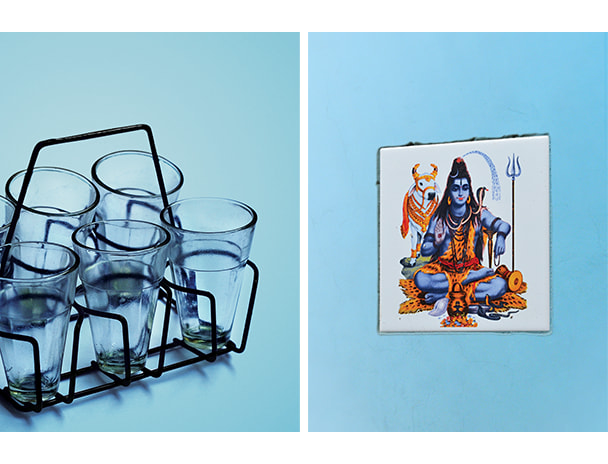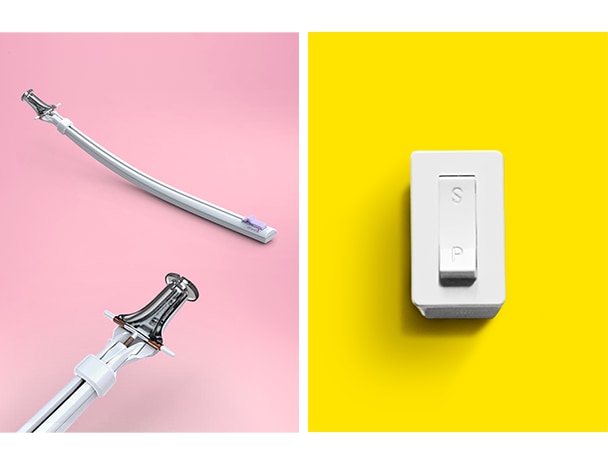The Street, the Studio and Us
We learnt a lot about design, and about ourselves, in the last month. Our studio recently curated an exhibition, which pitted ten products by a Swiss product design firm against ten objects from our culture, to ‘tell their stories’.
The pairings aren’t direct. Finding a counterpart requires a matching cultural context, which often doesn’t exist, so we tried to discover conceptually analogous matches.
Deep Design looks at the test result, treating the Swiss products as provocations. Decoupled from their Swiss matches, the selection has its own fingerprint. Discover inspiring new products, and rediscover some old ones.
As we reflect on what fascinates us, dogs us, or challenges us, here are some of the themes.
The Commonplace
First, finding designed products was hard. The product design industry in India is thinner than Europe’s. Accordingly, we responded with commonplace, ubiquitous objects.
The Chai Carrier is an example of ‘silent’ design, that has been evolved, rather than consciously designed, by anonymous creators. A more primitive form of it is improvised from twisted wire.
These commonplace finds, as with products of evolution, follow a ‘just enough’ ethos in their construction, showing a marvellous frugality of material, minimal tooling and technology, and opportunism.
commonplace finds, as with products of evolution, follow a ‘just enough’ ethos in their construction
But how well they serve their context and purpose! The Chai Carrier will travel on a lift to an office, or up a bamboo scaffolding to a welder working high above the street.
The God Tile is opportunistic: transferring a ‘God photo’ on to a standard white ceramic tile adds great value. It’s a zero-footprint puja point in the tiniest home, or a ready decoration for the tiny, high maintenance temple on your pavement (and for another use, see WIT).

The Phat Phat Boat and Banta Bottle fall are also commonplace objects but have other points of interest (see ALIEN REPORT).
Alien Report Like the brand Bata, we may think of the Phat Phat Boat and Banta Bottle as Indian, but all three have 19th century European origins. In India, the Boat and the Bottle became popular before independence, when markets were much more open than at any time between 1947 and the 1990s. They have survived, if only barely, the onslaught of Fisher-Price and Big Soda. A small legion of fans keeps them alive.

The Banta Bottle (patented 1872 in England as the Codd bottle but manufactured in India) contains an ingenious glass marble that serves as a pressure lock. On opening, it rolls back into the neck ready to be used for the next filling, magically letting soda flow freely when you swig. A genuinely sustainable bottle.
Like the Chai Carrier, the Bottle now enjoys a claim to an inverted chic, because a new, tony urban class now finds the street’s artefacts and language exotic. The Phat Phat Boat (an English patent from 1891) is powered by a tiny oil flame. It responds to nostalgia and parents’ yearning for simplistic, educational toys that are tactile. It’s made from recycled tin (scoring eco-points) and sold online under a creative commons license, a very 21st century touch.
Craft
It’s difficult to think of Indian design without traditional craft. It gives it identity, and a good deal of commerce. Outside textiles, though, it’s hard going. An unchanging discourse centres on ‘saving’ skills and communities, challenging designer-entrepreneurs to find new uses for objects or new techniques that can connect artisans to the market.
challenging designer-entrepreneurs to find new uses for objects or new techniques that can connect artisans to the market
Varnam’s Bird Hooks are a reuse of traditional turned-lacquer toys. They can be fixed to a wall to just charm, or hang up your T-shirt or hand-bag. The maker’s effort to build a modern boutique brand around it is noteworthy, with attractive packaging.
The Unipod is an ingenious lightweight frame structure which exploits the lightness and tensile strength unique to bamboo, resulting in a portable seat that can bear 200 times its weight. By leveraging artisanship rather than products, it’s a compelling story of the melding of modern design and traditional skill.

Wit
…is well and alive. The Indian Standard Time watch is a copywriter’s gag which turns our chronic lateness into a national joke we can wear proudly on our wrist. Money Treevisually pictures the old warning about trees and money, but creates an arresting image of the cycle of money, with the air of a shrine to money. SwitchMe is a simple amusement, half toy, half appliance, letting you switch on your salt or pepper.

The first two ideas draw on two cultural strands that hold meaning for us: lateness and Lakshmi. All three are children of this age, employing a type of verbal humour that travels well on the internet. (Another cultural idea, in a different class of wit is the common use of the God Tile on the exterior wall of a building, to discourage passers-by from using the wall as a pissoir or a paan-spittoon).
employing a type of verbal humour that travels well on the internet.
Modern Product Design is not a Footnote
Our studio was conscious that our selections would represent India in a particular way. Craft, and anonymous ingenuity are all very well, but what about professional Design? Three of our picks are outstanding examples.
Ticket’s Etherena IUE is empowering and inspiring. It inserts a pre-loaded IUD in a one-handed, no-touch action. Its curvature eases the process, avoiding pain, injury and sepsis. The simple push-pull knob action needs minimal training. It won the prestigious Red Dot Award in 2013.

The Unipod’s contribution has been detailed above, and has won several awards; the SwitchMe is well awarded, and has been shown at the MoMA.
______________________
First published in a slightly modified form ‘The Street, the Studio and Us’ in Business Standard, 8 October, in Deep Design, a fortnightly column by Itu Chaudhuri.

